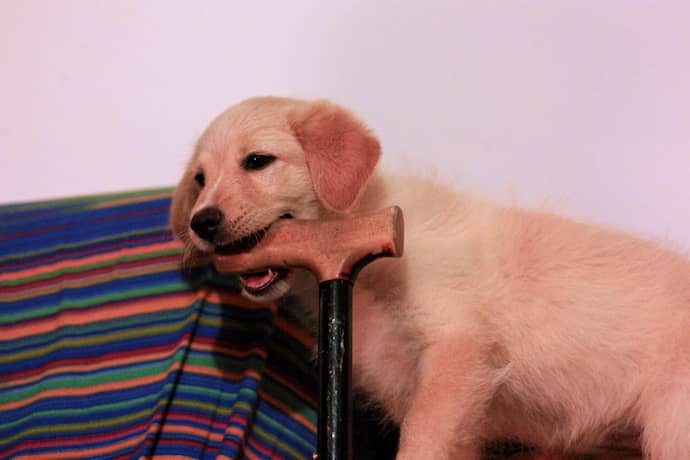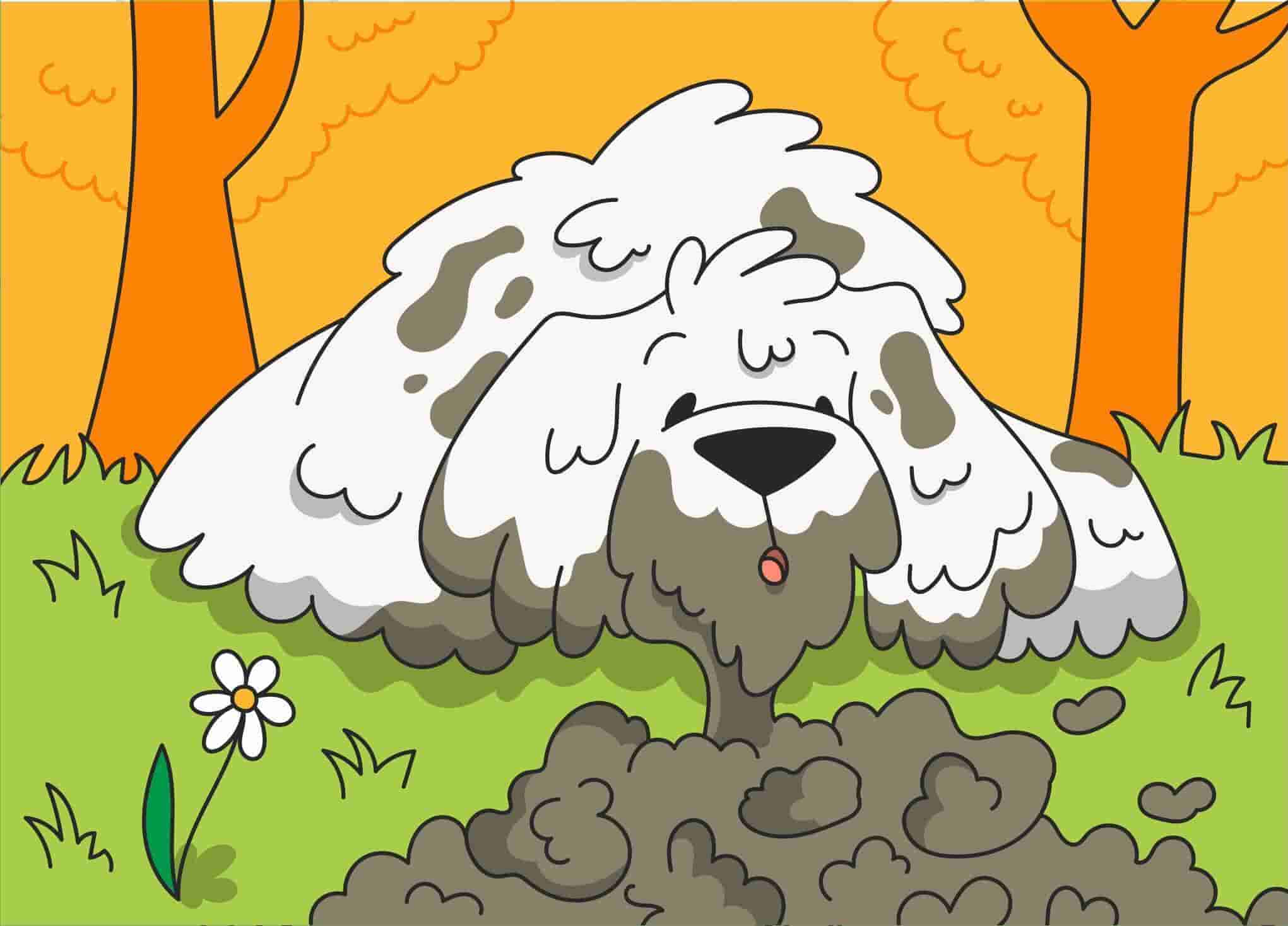Dogs have a well-earned reputation for chomping down on some rather strange things. If you've owned a mischievous puppy, you've probably lost a few shoes, maybe a rug, or your garden may have been totally chewed up. You might have also wondered, "Why is my dog eating dirt?" and "What to do when my dog eats anything?"
It's common for pups (and grown dogs too) to chew on all sorts of things in the absence of appropriate chewing toys. But what do you do if you find your dog actually eating items that aren't food?
When it comes down to it, there's a huge difference between dogs chewing on items and craving and consuming them. Chewing non-food items is relatively normal for dogs. Chewing and swallowing non-food items is not and should be cause for concern.
Stop Googling - Ask a Real Vet
What is Pica in Dogs?
"Help! My dog eats everything!"
Pica in dogs is a condition where they crave and compulsively eat items that are not typically edible or considered food. Sure, dogs often eat grass, but pica is something a lot more serious.
While pica-like behavior is typical in puppies learning what is and what isn't food, most pups will grow out of this. When adolescent and adult dogs continue to eat items that are not food, it can be very frustrating for owners and potentially dangerous for the dog. What is more, a research in Japan specifies that pica is the third most commonly reported behavioral problem in canines after barking at noises and unfamiliar visitors.
Often, the items that are being eaten are wildly inappropriate things that offer nothing in the way of nutrition, like wood, towels, or even plastic. Some dogs might crave and eat only one thing, like socks or paper, while others are a little less discerning and will eat various non-food items. This can include dogs eating rocks and books, and even drywall.
Canine pica is so much more than quirky behavior. It's a very complex disorder with some potentially dangerous and life-threatening consequences if it goes untreated. Pica dogs can develop severe intestinal blockages due to their strange diet, and their inappropriate snacks can cause irreversible damage to their teeth and even perforation of the stomach or intestines, which require immediate treatment.
Because of the possible life-threatening consequences of pica in dogs as well as other pet emergencies, getting support and assurance during such unexpected situations is a need. This is what Petcube’s Pet Emergency Fund strives to provide.
The Pet Emergency Fund offers coverage of $3000 annually for upto 6 pets, and they do so without discrimination as they welcome pets regardless of age, breed, and medical history. Vet bills are also instantly paid after treatment, so you won’t have to worry about having to shoulder the fees while waiting for payment. And did we mention that they have an online vet service? Yes, you may consult with certified vets anytime and anywhere. That way, you may ask any concern that you may have before, during, and after your pet’s treatment.
For our blog readers, we are giving an exclusive 27% off on subscriptions if you follow this link.
Pica in dogs shouldn't be confused with another common problem called coprophagia, which is a tendency, often in puppies, to eat feces. While it is more common in puppies, coprophagia can carry over into adulthood but is not strictly classified as pica.
Signs of Pica in Dogs
"Does my dog have pica?"
The symptoms of pica disorder in dogs are easy to pick up on if you're around your dog when they display inappropriate eating behavior. There's no better confirmation than catching your pooch eating something they shouldn't be. But you might not be with your dog all day, and you may struggle to catch them in the act of snacking on non-food items. In this case, there are some signs you can look out for that may indicate a problem.
Signs of pica in dogs can include things such as vomiting and diarrhea, but lethargy, a loss of appetite, and excessive drooling can also indicate a problem. An intestinal blockage is one of the side effects of untreated pica in dogs.
If your dog is straining during bowel movements, constipated, burping, drooling excessively, suffering from abdominal contractions, or passing dark, tarry stools, it's likely that there's an obstruction, and you should contact your vet immediately.
Of course, if you're keen to keep up with what your pets do while you're not around, check out the Petcube Bites 2 Lite, an interactive pet camera that allows you to watch your pets online from anywhere in the world.
Causes of Pica in Dogs
"Why do dogs eat dirt? What causes pica in dogs?"
Identifying pica in dogs is an easy part. Figuring out what's causing pica in dogs is another matter entirely and one that takes a lot of time and patience.
Dogs with pica may be experiencing a nutritional or a hormonal imbalance, which is causing them to crave non-food items. Other diseases such as diabetes and thyroid problems can also contribute to pica in dogs. Certain breeds of dogs like Labrador retrievers are also naturally more prone to developing pica than others.
So, where does one begin? Your vet will most likely want to do a range of tests on blood, urine, and stool to rule out any of these medical issues which might be to blame. They'll look for parasites, issues with digestion, and the malabsorption of nutrients that could be the root of the problem. If your vet suspects a potential blockage, X-rays or ultrasound may be required and possibly surgery to follow depending on the results.
If nothing becomes apparent after these tests, the problem is likely to be emotional or behavioral. This makes treating your dog's pica a bit trickier. Your dog can suffer from stress the same way you do but will react to it in ways that may be unexpected.
A dog suffering from separation anxiety can use chewing as a way to self-soothe, and sometimes chewing leads to swallowing all or part of whatever they're gnawing on. Boredom is another stress state that can lead to inappropriate eating of non-food items as the dog tries to burn off excess energy.
Whatever the cause, it's unlikely that pica in dogs will go away on its own.
Treatment of Pica in Dogs

"How do I treat pica in dogs?"
Treatment for pica in dogs will depend mainly on what the underlying cause is. If a medical issue is to blame, treating it should eliminate the pica behaviors. Medical reasons for pica in dogs are the easiest to treat. For example, if a nutritional deficiency is to blame, dietary supplements, comprehensive dietary change, or a fix in the feeding schedule can correct the problem.
However, if the cause is more emotional or behavioral in nature, treatment will be more challenging. Successful therapy for behavioral pica can require a combination of interventions, for example, behavioral reconditioning, reducing stress and anxiety, keeping problematic items away from the dog, and making changes to the dog's environment.
Behavioral pica is far more challenging to treat as it will require consistency and perseverance on the owner's part, but with time and patience, there's no reason a pica dog can't be helped.
In the case of stress-related pica, spend some time assessing your dog's environment for potential triggers. Things that may upset your dog include other pets that may cause stress, loud noises that the dog can't escape from (building noises from next door, lawnmowers, or thunder), and even too much time alone.
Where stressors can't be eliminated, providing a safe and appropriate outlet for your dog's anxiety is critical. Plenty of exercise and play is a healthy release for your dog's anxiety and stress. Providing appropriate chew toys for self-soothing and stimulating playtime will give your dog acceptable and beneficial ways to deal with their stress.
If you're providing stimulating and challenging toys for your dog, it's a great idea to rotate them regularly to keep your pup engaged and challenged.
Successful treatment of pica in dogs will require you to work closely with your veterinarian, a dog behaviorist, or a competent trainer to identify your dog's triggers and retrain your pooch to find appropriate ways of managing stress.
Treating any behavioral issue in your dog is a long-term commitment and will require persistence and dedication for the best outcome for both you and your canine companion.
Medication
For cases of canine pica that don't resolve with behavioral therapy or pica that is so severe it endangers the dog's life, medication might be used to help.
When humans suffer from anxiety, sometimes antidepressants are used to provide relief. And the same can be true for dogs, especially when medication is combined with behavior modification.
Canine versions of Prozac (or Fluoxetine) can help treat dogs with extreme separation anxiety and compulsive disorders. Alternatively, dog-appeasing hormones are a drug-free, natural option to help dogs that suffer from stress and separation anxiety. Either way, consult your vet first to determine what medications, if any, are needed in your case.
Final Thoughts on Pica in Dogs
Pica in dogs is easy to spot but not as easy to treat. If you suspect that your dog has pica, your first step is to get your pup to the vet, where the necessary tests can be done to eliminate any medical causes. Don't delay visiting your vet. Pica can have some really nasty and potentially fatal consequences if left untreated, so the sooner you get help, the better.
In the absence of a medical reason for your dog's pica, you'll need to identify your dog's stressors, eliminate them where possible and offer mitigating interventions like additional exercise, stimulating playtime, and appropriate chewing toys.
Treating your dog's pica is not a one-size-fits-all solution, and you may need to trial a few potential solutions until you find one that works. It's going to be more of a marathon than a sprint, requiring much of your time and patience. But success is within reach if you keep at it. Don't hesitate to involve expert dog trainers and behaviorists who can support you and guide you as you navigate this tricky issue.
Was this article helpful?
Help us make our articles even better









